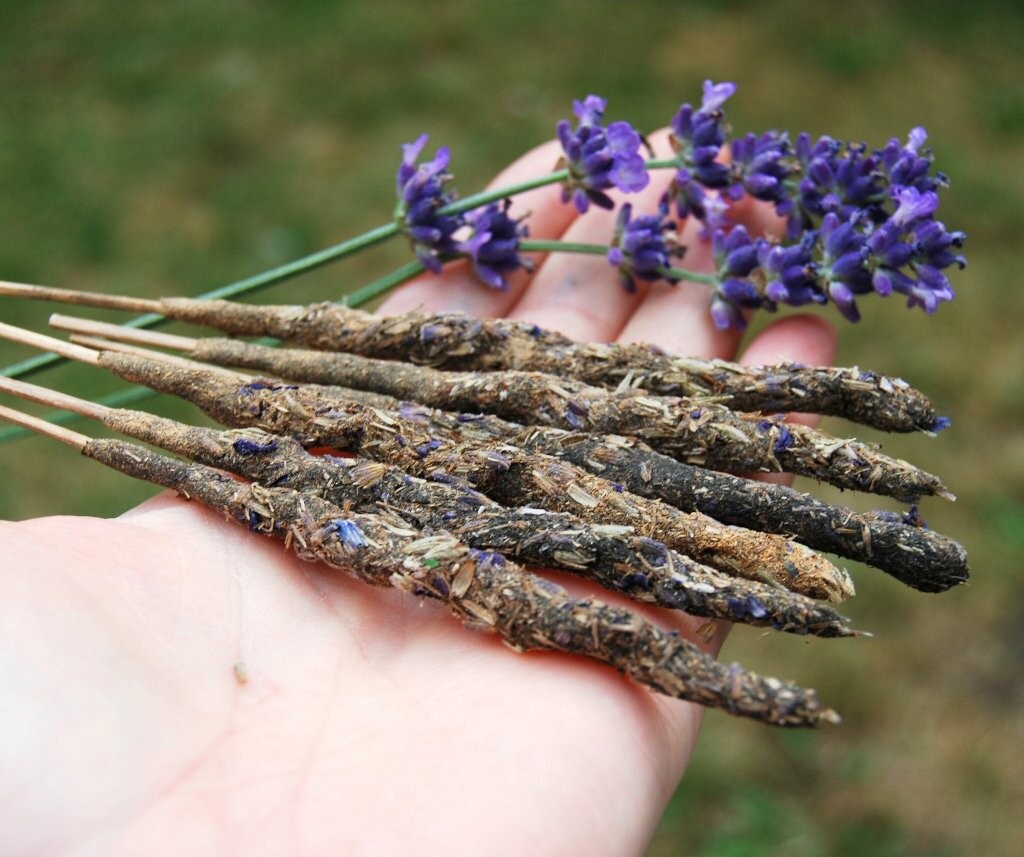Learn how to make incense from fresh herbs and flowers. You can use leftover herbs and your favorite flowers without much preparation. Homemade incense packets are a simple way to improve the ambiance of your home with minimal effort.
How to make homemade incense with flowers
This incense is an excellent gift for birthdays, anniversaries, weddings and much more. Let’s take a look at the different materials you have to get to make your homemade incense with flowers.
Materials for making homemade herbal incenses
- Cotton string: to tie your herbs and flowers. This type of twine does not melt and is commonly used in the kitchen. Hemp twine and jute twine are other alternatives.
- Flowers and herbs: you can choose your favorite fresh flowers and herbs to make your homemade incense. Be sure to check if the flowers are in season before you start preparing your incense bundles.
- Scissors: for cutting your herbs and flowers.
- Plate resistant to heat: the incense will be consumed on this plate. Choose a decorative one that matches your flowers and herbs.
- Hanger: used to dry the incense bundles.
- Matches or lighter: to light the incense.
Choose flowers that are not in full bloom as mature flowers are more likely to mildew or lose their petals in the drying process.
When making herbal incense, limit yourself to plants that have been traditionally incinerated for their aromatic smoke, as some species of plants produce toxic smoke.
You can start with one or several of these plants, combining a variety of botanicals with different textures and hues. Try adding a splash of color with these beauties: lavender, rose petals, sage and purple varieties of basil and floral petals.
Herbs and flowers to make incense
Flowers
- Roses
- Carnation
- Gardenia
- Hyacinth
- Jasmine
- Freesia
- Lilac
- Lilies
- Geranium
Herbs
- Sagebrush
- Sage
- bay leaves
- Lavender
- Eucalyptus
- Cinnamon
- Chamomile
- Lemon grass
- Rosemary
- Thyme
- Vanilla
- Cedar
How to make incense with flowers and herbs
Step 1: Prepare the herbs and flowers to make the incense
- Cut the stems of the herbs to about 15 centimeters in length and cut the stems of the flowers between three and six centimeters.
- Remove the excess leaves from the flowers.
- Put 5-10 sprigs of each plant and group them in the same direction.
Step 2: Bundle herbs and flowers
Large-leafed herbs, such as bay leaves and eucalyptus, are ideal to use as a base for the bunch.
- Put the flowers on top of the herbs to keep them secure.
- Set the sprigs in the same direction in bunches of 5 to 7 cm in diameter.
- You can prepare bunches made with only one type of plant or you can prepare mixed bunches composed of different species.
- The bundle will shrink as it dries, so make it a little thicker than the size to be achieved.
Step 3: Use the twine to secure your incense bundle
- Unravel a long piece of cotton string about five to eight times longer than your bundle.
- Tie the twine at the base of the stem of the bundle to hold it together.
- Leave about two inches of twine on the shorter side.
- Once the bottom is secured, wind the long end of the twine up around the bunch until you reach the top.
- Then wind the string down in the opposite direction.
- Once you have reached the base of the bundle, you need to tie the long end of the twine to the short end to secure it.
- As the plant material dries, the bundle will shrink, so it is important to tie the bundle securely so that it does not unravel.
Step 4: Hang the bundles upside down to dry
- Using a hanger dry your incense by hanging them in a warm, dry space.
- The heat and air movement will speed up drying, which is important if you live in a humid climate.
- If the incense dries too slowly, the inside will become moldy.
Alternatively, you can also make in the classic incense sticks, just compact the ingredients more.
If you live in a dry climate or have heating or air conditioning in your home, this is not a problem. Check for dryness after four to seven days by folding the plant material, if the plant breaks and feels crunchy, it is dry and ready to light.
Store your incense in glass jars to preserve freshness and aroma. If you live in a humid climate, this is essential to prevent mold and keep the incense sticks dry enough to incinerate.
Step 5: Place your incense in a heatproof dish and light it
Light the tip of your incense with a lighter, candle, or match. If the flame does not go out on its own after five seconds, blow gently. Place the incense over a shallow, fireproof bowl to catch the falling ashes.
Don’t ever leave incense burning unattended
If you have children at home, be sure to teach them fire safety when lighting incense; children love to imitate adults and have a natural curiosity about fire.
Keep in mind that incense smoke can trigger asthma attacks and aggravate respiratory conditions; avoid lighting incense near people who are sensitive to smoke or have respiratory problems.
This article has been adapted and translated by InfoMistico.com / Source: remediosancestrales.es





